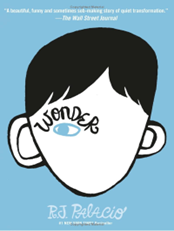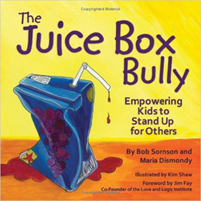
Why is Bullying a Problem among Today’s Youth
In the dynamic landscape of today’s society, one unsettling issue that continues to plague our youth is bullying. The impact of bullying goes beyond the playground or school corridors. It leaves deep emotional scars that can affect victims for a lifetime. In this blog, we delve into the reasons behind why is bullying a problem among today’s youth and shed light on the importance of addressing this concern.
Why is Bullying a Problem?
Bullying is not a new phenomenon, but its manifestations have evolved alongside the digital age. The digital era has given rise to cyberbullying, a form of harassment that occurs online through social media, instant messaging, and other digital platforms. This is one of the reasons why is bullying a problem.
This anonymity can embolden bullies, making it easier for them to target their victims without facing immediate consequences. The problem is compounded by the fact that technology allows bullying to transcend traditional boundaries, making it difficult for victims to escape the torment.
Moreover, the pressures of modern society, academic competition, and the pursuit of popularity have contributed to a culture where some individuals resort to bullying as a means to assert dominance or cope with their own insecurities.
It’s crucial to recognize that bullying is not merely a rite of passage or an inconsequential part of growing up; rather, it can have far-reaching consequences on a victim’s mental health, self-esteem, and overall well-being.
Empowering Through Literature: Three Books to Combat Bullying
1. “Wonder” by R.J. Palacio

When dealing with the subject of why is bullying a problem, “Wonder” is a heartwarming and thought-provoking novel that tells the story of Auggie Pullman, a fifth-grader with a facial deformity who embarks on a journey of self-discovery and acceptance. Born with a rare medical condition, Auggie has been homeschooled for most of his life. However, as he enters public school for the first time, he faces the challenges of making friends, dealing with bullies, and navigating the complexities of middle school.
2. “The Juice Box Bully” by Bob Sornson and Maria Dismondy

“The Juice Box Bully” is a children’s picture book that takes a proactive and empowering approach to bullying prevention. The story centers around Pete, a new student at school, who initially starts displaying bullying behavior by picking on others. As the story unfolds, a fellow student named Ruby takes a stand against Pete’s actions and encourages the entire class to unite against bullying, making it one of the best books when it comes to why is bullying a problem.
3. “Billy the Bully” by Sharon Linen


“Billy the Bully” is a compelling book that delves into the perspective of the bully, offering readers a unique opportunity to understand the motivations and struggles that might lead someone to engage in bullying behavior. The story follows Billy, a young child who initially engages in bullying due to personal insecurities and personal challenges. However, as the story progresses, Billy’s journey takes an unexpected turn.
You may also like to read: Parenting a Bully: How to Break the Cycle of Violence
Why is Bullying a Problem and How to Stop it?
- Schools should establish clear and comprehensive anti-bullying policies that outline the unacceptable nature of bullying, the consequences of engaging in bullying behavior, and the procedures for reporting incidents.
- Educate students, teachers, and parents about what constitutes bullying, its various forms (physical, verbal, relational, cyberbullying), and the serious consequences it can have on victims.
- When answering the question “Why is bullying a problem”, it’s important to create a safe and confidential reporting system that allows students to report incidents of bullying without fear of retaliation.
- Cultivate a positive and inclusive school climate where kindness, respect, and empathy are valued. Promote activities that encourage teamwork, collaboration, and understanding among students.
- Engage parents and guardians as partners in preventing bullying. Keep them informed about the school’s anti-bullying efforts, policies, and resources available to students by encouraging open communication.
Educating Parents to Understand a Bully’s Perspective
In the mission to combat bullying, it’s imperative to shed light on the other side of the coin – the bully’s perspective. Educating parents about this viewpoint can be a powerful step towards knowing why is bullying a problem, fostering empathy, and addressing the root causes of such behavior. Often, bullies themselves might be struggling with underlying issues like low self-esteem, home troubles, or a lack of proper guidance. By encouraging parents to approach the topic with open hearts and minds, we can create a safer space for both the bullied and the bullies. This holistic approach not only aids in transforming bullies into responsible individuals but also instills a sense of compassion within families and communities.
Ending Note
In conclusion, addressing the pervasive issue of bullying among youth necessitates a collective effort that encompasses awareness, education, and empathy. Through the books mentioned above, children gain valuable insights into empathy, proactive kindness, and personal transformation.
It’s worth noting that Sharon Linen, the author of “Billy the Bully,” has penned more insightful children’s books that parents can explore to foster important conversations and values with their children.




